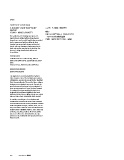Page 438 - Sotheby's October 3 2017 Chinese Art
P. 438
3758
PROPERTY OF A GENTLEMAN 元至明 青玉雕童子戲象把件
A RUSSET JADE ‘ELEPHANT’ 來源:
GROUP 告羅士打公爵亨利王子(1900-1974年)
YUAN – MING DYNASTY ,1929-1935年間得於亞洲
巴黎佳士得2014年12月10日,編號5
the saddled beast standing foursquare, its
lowered head detailed with narrow almond-
shaped eyes and a curled trunk between pointed
tusks, caparisoned with an elaborate long
tasseled rug incised with diaper and key-fret
bands, with one foreigner clambering atop its
back and another perched on its hind leg, the
stone of a beige tone flecked with russet
8 cm, 3¼ in.
PROVENANCE
Collection of H.R.H. Prince Henry, Duke of
Gloucester (1900-1974), acquired in Asia, 1929-
1935.
Christie’s Paris, 10th December 2014, lot 5.
HK$ 600,000-800,000
US$ 77,000-103,000
The elephant is associated with the mythical
Shun Emperor, one of the twenty-four paragons
of filial piety, and also the mount for the Buddhist
Deity Samantabhadra. The motif of boys riding or
climbing on an elephant represents the wish for
good fortune, as the phrase ‘ride an elephant’ is
close in pronunciation to ‘good fortune’ (jixiang).
A carving of two boys washing the back of an
elephant, its head turned slightly to the front,
attributed to the Yuan or Ming period, was sold at
Christie’s New York, 23rd March 1995, lot 207.
A similarly carved figure of an elephant with
saddlecloth, but with head turned, was included
in the Oriental Ceramic Society exhibition Chinese
Jade Throughout the Ages, London, 1975, cat. no.
363; and another from the Guan-fu collection was
included in the exhibition Chinese Jades from Han
to Ch’ing, Asia House Gallery, New York, 1980,
cat. no. 57, where it is noted that the zig-zag
pattern on the saddlecloth are typical patterns of
Ming brocade.
436 SOTHEBY’S 蘇富比

